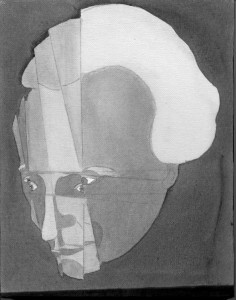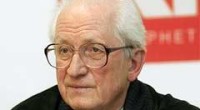Lord Murray. A Personal View of Kant’s Main Impact Today
The concluding section of one of Kant’s major works, “The Critique of Practical Reason”, begins with the often-quoted comment: “Two things fill the mind with ever new and increasing admiration and awe the oftener and more steadily we reflect upon them: the starry heavens above and the moral law within” [2, 260]. With these words, I think, Kant encapsulates not only the breadth of man’s vision and wonder but also the wide sweep of his own philosophical thinking. His thoughts on each of these two areas of awe constitute, in my opinion, the two pinnacles of his original thinking, not overshadowed by the monumental influence of his Copernican revolution in epistemology, restoring the philosophical balance in face of a sceptical empiricism which had been developing under the influence of David Hume and others. Although his exposition in “The Critique of Pure Reason” [2, 1]. the place of the a priori in knowledge and experience seems over-scholastic and unattractive to modern readers, Kant did demonstrate that there was a genuine place for reason in knowledge and that perception was not merely a matter of filling an empty percipient with raw sensations and impressions. In a sense perhaps his conception of categories of the understanding may be seen as foreshadowing programming of computers for handling and ordering raw data. However the rather unattractive features of Kant’s epistemology are not shared by the two pinnacles of thought which I have identified.
The first of these, referring to the starry heavens above, draws attention to Kant’s scientific thoughts in astronomy and cosmology which are rarely recollected today. The second refers to his analysis of the rational core of moral judgement in his “Fundamental Principles of the Metaphysic of Ethics” [1] in which he expounds his conception of moral law centred on his celebrated notion of the categorical imperative.
Turning to the first of these topics, more than a century and a half before Edwin Hubble was able in 1924 to confirm by observation that spiral nebulae are distant galaxies similar to the Milky Way, Kant had inferred that this was the case. He reached this conclusion on the basis of cogent reasoning on what little was known by observation in 1755 when his “Universal Natural History and Theory of the Heavens” was published.[5] Despite the fact that he reached this conclusion some forty years before the French mathematician and astronomer Laplace, Kant is credited as only joint originator with Laplace of the nebular hypothesis of galaxies.
With the invention of the telescope by Galileo it became possible for the first time to resolve some parts of the Milky Way into stars. In Kant’s time it had become reasonable to suppose that the Milky Way might be solely composed of myriads of stars of which the sun was only one. But there was no generally accepted view of the shape or structure of the Milky Way. Kant’s starting point was to note that the main observed features of the Milky Way in relation to the earth and the solar system were consistent with a disc-shaped assemblage of stars in which the sun and solar system were embedded. Thomas Wright in his work “An Original Theory and New Hypothesis of the Universe” [8] had developed a somewhat similar view but had opted for a ring-shaped or spherical assemblage of stars.
Conceiving the Milky Way as a disc-shaped assemblage of stars, probably in rotation, Kant then posed the question what it might look like as seen from an immensely distant point far outside the Milky Way itself. As Kant put it in his “Universal Natural History”: “If such a world of fixed stars is viewed from such an immeasurable distance from the eye of the observer who finds himself outside it, then it will appear under a small angle as a small space illuminated by weak light, whose figure will be circular when its plane presents itself directly to the eye, and elliptical when seen from the side. The weakness of the light, the figure and the knowable magnitude of the diameter will be such a phenomenon that it is possible to distinguish it clearly from all stars that are seen individually”.[5, 106].
Kant then explains that the prime observational candidates for his hypothesis are faint nebulae of the more or less elliptical form which had been categorised then as nebulous stars. He points out that, assuming that they are as distant as fixed individual stars, such nebulous stars would be enormously much larger. But if so they would as stars be enormously brighter than ordinary stars; but on the contrary their light is enormously weaker. Kant then reasons “Far more natural and comprehensible is it that they are not single great stars but systems of them whose distance presents them in so narrow a space that the light, which is unnoticeable from each individually, issues in their immeasurable multitude into one uniform faint glimmer. The analogy with the system of stars in which we find ourselves, their shape which is exactly as it should be according to our doctrine, the weakness of light which requires a presumably infinite distance, all this agrees so perfectly for us to hold these elliptical figures to be just such world orders and, so to speak, to be Milky Ways whose constitution we have just unfolded…” [5, 107]
Kant’s clear and concise reasoning, based upon the scant observational knowledge then available, is compelling in its simplicity and clarity. However it required the power of the 100-inch Mount Wilson telescope used by Hubble to resolve the individual stars of our nearest spiral galaxy, thus vindicating Kant’s conclusion 169 years earlier.
In another passage [5, 174-175]. Kant suggested that the planets of our solar system had arisen by the accumulation and aggregation by gravity of particles coalescing over time in an essentially cool environment. This idea came into favour again only at the end of the twentieth century.
Turning to Kant’s discussion of moral theory, the second of the two topics which I am highlighting, Kant’s doctrine of the categorical imperative has been a matter of continuous discussion ever since he first expounded it and it remains alive and well in the twenty-first century. Of course it is not without its critics many of whom, I suspect, treat it as a complete theory of morals whereas, at least in my view, Kant intended it to be an analysis of the basic principles upon which moral judgement is logically grounded. If one concentrates on this latter aspect it is difficult to put one’s finger on any other analysis which is more rigorous or better. It brings out the need for moral authority to bear directly upon each individual subject of morality and to bear directly through its universality upon each other subject of morality. In this sense the categorical imperative could be seen as providing a proper philosophical foundation for the so-called “Golden Rule” which is widely accepted by the world’s major religions, but which Kant considered logically inadequate to be a comprehensive moral principle, despite its emphasis on universality and reciprocity.
It would not be right to end consideration of Kant’s impact on thinking today without remarking upon the deep humanity which he evinces from time to time in his various writings, including his “Metaphysic of Morals” [6, 265], “Perpetual Peace” [7] and “Anthropology”.[4] Indeed Kant expresses it concisely in his second formulation of the categorical imperative as follows: “So act as to treat humanity, whether in thine own person or that of any other, in every case as an end withal, never as means only”. [1, 47] In honouring Kant in this second centenary year of his death, we may celebrate not only his rationality and wisdom but also his enduring grasp of the value of the human individual and a humane society.
As a memorial to Kant a metal plaque was placed upon the wall of Konigsberg Castle quoting the notable passage from “The Critique of Practical Reason” which I cited at the beginning of this paper. What remained of the castle after World War II was demolished in the 1960s to make room for reconstruction. The plaque was rescued and taken to Duisburg, Germany. However Prof. Dr. Kalinnikov, of Kaliningrad State University, has informed me that in its place a new plaque, bearing the same quotation – appropriately in both German and Russian – has been erected on the site to remind the present citizens of Kaliningrad and visitors of the city’s illustrious former citizen.
Bibliography:
- Kant I. Fundamental Principles of the Metaphysic of Ethics. Longman Green & Co., 1927.
- Kant I. The Critique of Practical Reason. Longman Green & Co., 1927.
- Kant I. The Critique of Pure Reason. Macmillan & Co., 1929.
- Kant I. Anthropology. Southern Illinois University, 1978.
- Kant I. Universal Natural History and Theory of the Heavens. Scottish Academic Press, 1981.
- Kant I. Metaphysic of Morals.
- Kant I. Perpetual Peace. Hackett Publishing Co., 1983.
- Wright T. An Original Theory and New Hypothesis of the Universe. London, 1750.
This article was firstly published in collected articles “Kant zwischen West und Ost” (2005):
Lord Murray. A Personal View of Kant’s Main Impact Today// Kant zwischen West und Ost. Zum Gedenken an Kants 200. Todestag und 280. Geburtstag. Hrsg. Von Prof. Dr. Wladimir Bryuschinkin. Bd.2. Kaliningrad, 2005. P. 311-314.





